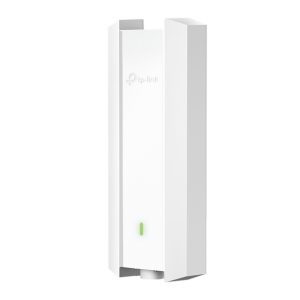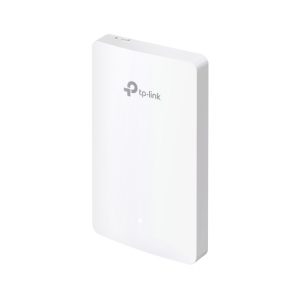

The scenario
A local caravan site with around 100 caravans plus touring pitches would like to provide wifi coverage around the whole of the site for both staff and customers, as well as using it to connect their site CCTV that is located around the site. They require it to cover both outdoor areas as well as indoor areas such as the reception.
Previously, internet speed coming into the premises has always been a problem however this is no longer an issue as a full fibre connection is now available.
There has previously been site wifi installed and managed by a third party however this is no longer and the owner would like management of the site internet themselves.
The previous site wifi did not provide connections for the CCTV nor did it provide the same network inside the reception area.
The requirement
The main aims of the install were:
- To provide good wifi coverage around all the site indoors and outdoors.
- To provide a connection for the CCTV cameras outside to use.
- To provide an exclusive network with an exclusive SSID for the site management to be able to use both indoors and outdoors.
- To provide a guest network via a portal for both static and touring customers to use with a fair bandwidth policy that is also isolated from all other devices.
- To be able to administer the guest network via the use of vouchers for guests according to the type of guest that they are i.e. short stay tourer or year round static resident.
- To be able to self manage the network and wifi within the property which could be done either locally on the network or remotely.
The hardware solutions
After surveying the areas of the site, it was decided that equipment consisting of the following main components would be used:
- POE switches
- Wifi 6 indoor access points
- Wifi 6 outdoor access points
- A point to point wifi bridge
- A hardware controller
Equipment from the TP Link Omada series were chosen and installed due to it’s reliability, excellent support, features and flexibility of management.
The main POE switch and hardware controller were located in the reception area.
- Indoor access points were hardwired from the POE switch to the relevant rooms to provide wifi indoors.
- An outdoor access point was hardwired from the POE switch and mounted to the outside of the reception building to provide outdoor wifi close to the reception.
- A point to point wifi bridge was then installed. The transmitter was hardwired from the POE switch and mounted on the outside of the reception building. The receiver was then installed on a post in a central location in the caravan site with another outdoor access point hardwired to it.
- Further outdoor access points were then installed in locations around the site to create a mesh network.
The software solutions/configuration
- Configuration and management of the access points was set up using the hardware controller. This would allow remote access and management of the access points by authorised administrators via the web based interface along with the adminstration of vouchers for guests.
- Remote logging was also set up.
The network was configured to broadcast to SSIDs which were the following:
- A password protected private SSID exclusively for the business to connect to for their devices including CCTV. This would be available in all areas indoors and outdoors.
- A customer SSID for the customers to log in with via a portal with voucher codes that had been administered to them upon their arrival. Two different vouchers were created with different time limits – one for all year residents and one for touring guests. All guest devices were isolated from others on the network.
Using the hardware controller meant there were many more features available to the administrators such as:
- Seamless roaming between access points without the need to disconnect and reconnect.
- Network analysis and optimization of faults, setup and traffic.
- The ability to configure the wireless settings of each access point to give the best possible coverage such as channel and transmission settings.
- Check the traffic and usage of each access points.
- Manage the security of the network with features such as url filtering, access control, blocking certain devices where needed, limit bandwidth where required.
- Manage methods of how customers can authenticate to log on to the network. i.e. password, voucher codes, SMS authentication.
- Create a landing page that guests can see when they first connect.
- Keep a log of all activity on the network for a specified length of time
The end result
- All areas of the site now have wifi coverage of the required speed and stability.
- The owners devices now have a fast, reliable internet whilst maintaining full security from guests.
- Guests can now long in to the guest network via a secure portal by means of a voucher. Each guest device is isolated from all others and has a bandwidth restriction to ensure balanced usage across all customers.
- The authorised administrator of the network can manage and troubleshoot the system remotely as required.
- A secure log is kept of all activity across the access points.
Furthermore, after the initial cost of the installation, the cost of running the network is very low. The only other cost after that would generally tend to be any upgrades or maintenance if required which is quite rare.

